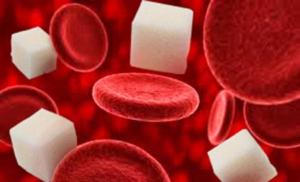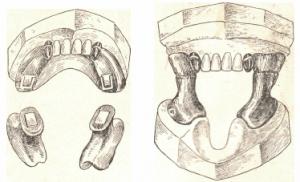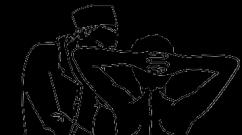False belly. Acute abdomen. Causes of development
- a complex of clinical, laboratory and instrumental signs indicating a catastrophe in the abdominal cavity and the need to provide the patient with emergency surgical care. It is manifested by the main triad of symptoms: abdominal pain syndrome, tension of the anterior abdominal wall, impaired intestinal evacuation function (peristalsis). Diagnostic value is a correctly collected anamnesis, examination, radiography of the abdominal and thoracic organs, ultrasound, laparoscopy. This syndrome usually requires urgent surgical intervention to save the patient's life.
ICD-10
R10.0
General information
Acute abdomen is a collective concept that includes any catastrophic situation in the abdominal cavity (acute inflammatory diseases, circulatory disorders, injuries and damage to organs, intestinal obstruction of any etiology), which requires rapid diagnosis, correct diagnosis and urgent surgical intervention. The most relevant understanding of the essence of the acute abdomen syndrome is for emergency doctors and emergency rooms of hospitals, since it is they who must establish the correct diagnosis as soon as possible and hospitalize the patient in the specialized surgical department.
The need to compile a diagnostic search algorithm for acute abdomen syndrome arose at the beginning of the twentieth century. This need was dictated by the fact that a significant number of deaths in the hospital were due to the postponement of surgery in patients with acute surgical pathology of the abdominal cavity due to the difficulties of diagnosis and differential diagnosis. According to statistics, mortality among patients diagnosed with acute abdomen, hospitalized and operated on in the first six hours from the onset of the disease, is 5-8 times lower than among patients with the same pathology who received surgical care at a later date. It should be noted that overdiagnosis of an acute abdomen (pseudo-abdominal syndrome against the background of somatic pathology) is also a big problem, since unreasonable surgery can significantly worsen the condition of such patients.
Causes of an acute abdomen
Surgical and non-surgical causes can lead to the occurrence of acute pathology of the abdominal organs, requiring emergency surgical intervention. In gynecology, traumatology, abdominal surgery, an acute abdomen is often associated with intra-abdominal bleeding, which may accompany ectopic pregnancy, ovarian apoplexy, abdominal trauma, perforation of hollow organs. In this case, blood enters the abdominal cavity, causing irritation of the peritoneum and symptoms of acute blood loss.
A different mechanism for the development of an acute abdomen is observed in violation of blood circulation in the organs of the abdominal cavity and small pelvis: acute occlusion of mesenteric vessels, strangulated hernia, intestinal obstruction, torsion of the leg of the ovarian cyst, necrosis of the myomatous node, torsion of the testicle, etc. In such situations, peritoneal symptoms are due to ischemia, rapidly growing necrobiotic changes in one or another organ and incipient peritonitis. In diseases such as acute appendicitis, cholecystitis, acute pancreatitis, salpingo-oophoritis, the characteristic clinical picture is determined by an acute, sometimes purulent, inflammatory process.
Surgical causes of an acute abdomen are ruled out first. However, there are a number of diseases in which severe abdominal pain is not associated with pathology in the abdominal cavity. Such conditions simulate the clinic of an acute abdomen, but do not require emergency surgical intervention. Non-surgical causes of acute abdominal pain include some infectious diseases (acute intestinal infection, mononucleosis, hepatitis), dysmetabolic disorders (ketoacidosis in diabetes, hemochromatosis, elevated blood triglycerides, etc.). Intense pain can radiate to the abdomen with myocardial infarction, pleurisy and pleuropneumonia.
Symptoms of an acute abdomen
The clinical picture of an acute abdomen includes a triad of main symptoms: abdominal pain, muscle tension in the anterior wall of the abdominal cavity, intestinal motility disorder. These signs can be combined with each other and with less significant symptoms in various combinations.
Pain is the first and most striking symptom of an acute abdomen. They can have different localization, prevalence and intensity. The most pronounced and diffuse pains are observed with extensive injuries of the abdominal cavity, pancreatic necrosis. On the contrary, in elderly and debilitated patients, children, against the background of intoxication, the pain may be non-intense, wandering. More often the pain is acute, dagger, although there are also cases with a gradual onset of pain. Most patients indicate that the pain has migrated from the original source, spread to other regions or the entire abdomen. By nature, it can resemble a knife blow, be cramping, debilitating, burning, etc.
In some pathological conditions (intestinal obstruction, destructive appendicitis), episodes of acute pain and imaginary well-being may alternate. Often the pain syndrome can be accompanied by persistent hiccups, vomiting. Inflammatory exudate and blood accumulating in the abdominal cavity irritate nerve receptors and cause positive symptoms of "roly-up" (a pronounced increase in pain when moving from a sitting position to a horizontal one, in connection with which the patient immediately sits down again), phrenicus symptom (significant soreness when pressing between the legs of the sternocleidomastoid muscle). The tension of the muscular corset of the abdominal cavity is also associated with irritation of the sheets of the peritoneum by exudate, the contents of the digestive tract and blood. As mentioned above, in elderly, debilitated patients and children, this symptom may also not be expressed.
Changes in the nature of feces, constipation and loosening of the stool, a delay in the passage of gases can serve as a manifestation of a violation of the intestines. So, in the initial phases of acute appendicitis, intestinal intussusception, loose stools can be observed. With intussusception, perforated ulcer, mesenteric thrombosis, blood will be determined in the stool. The absence of feces and gases speaks in favor of intestinal obstruction.
Many diseases, manifested by the clinic of an acute abdomen, are accompanied by anemia: pallor of the skin, cold sweat, chilliness. Running episodes of an acute abdomen are accompanied by shock phenomena - indifference, lethargy, sharpness of facial features, earthy-gray skin color.
Diagnosis of an acute abdomen
In the diagnosis of an acute abdomen, a correctly collected anamnesis, combined with a well-conducted physical examination, is of great importance. It is important to find out whether the pain developed acutely (perforation of a hollow organ) or the pain syndrome gradually increased (peritonitis); whether the pain is localized in one place or migrates; Is the pain associated with food intake? Vomiting indicates a violation of the passage of food through the intestines of a mechanical or reflex nature (intestinal obstruction, colic). Be sure to find out if there have been recent changes in the nature and frequency of stools, if there were any pathological impurities in the feces (blood, mucus in the form of "raspberry jelly", etc.).
During the examination, close attention is paid to the state of the cardiovascular system (heart rate, blood pressure) for the timely diagnosis of bleeding, shock. When examining the abdomen, its shape is assessed (sunken or scaphoid, tense - with perforation of the stomach, intestines; overinflated and asymmetric - indicates intestinal obstruction), cicatricial changes and hernial defects are detected. Palpation allows you to detect the criteria for irritation of the peritoneum, volumetric formations in the abdomen, to localize the source of pain. Percussion can determine the expansion of the boundaries of the liver, the presence of free gas or effusion in the abdominal cavity. When listening to the abdomen, intestinal noises either increase significantly (in the initial phases of intestinal obstruction) or are not heard at all (in the height of obstruction).
All patients with suspected acute abdomen should have a rectal examination. It is necessary to focus on the exacerbation of pain when pressing a finger on the walls of the ampoule of the rectum (this indicates the presence of effusion in the small pelvis). If even small hernial protrusions are detected in a patient, it is recommended to conduct a digital examination through the hernia gate. When using this technique, there is a direct irritation of the parietal sheet of the peritoneum, so the soreness and tension of the abdominal wall will be more pronounced. In children, it is useful to palpate the abdominal organs in a state of sleep or sedation, when involuntary tension of the abdominal wall can be excluded.
Laboratory tests in an acute abdomen are not informative, they reveal purulent-inflammatory changes, anemia. One of the simplest and most affordable methods for verifying a catastrophe in the abdomen is a survey radiography of the OB. In critically ill patients, images are taken in a horizontal position (lateral projection), in other cases, X-rays are taken in a vertical position. The pictures visualize free gas in the abdominal cavity, darkening in sloping places (exudate), arches and levels in the intestinal loops, gas in the retroperitoneal tissue. An extended diagnostic search includes X-ray contrast studies: gas, a contrast agent are injected into the stomach or intestines. If air or contrast enters the free abdominal cavity, this indicates a perforation of the hollow organ. If, when contrasting the stomach, its anterior displacement is noted, one can think of pancreatic necrosis. Sometimes a specialized X-ray examination (celiacography, mesentericography) may be required.
If a patient is suspected of having an acute abdomen, care should be taken to rule out conditions that mimic an abdominal catastrophe. An operation performed on a patient with severe somatic pathology often leads to deterioration of his condition and death. That is why, upon admission to the emergency room, it is required to exclude non-surgical factors of an acute abdomen: myocardial infarction (ischemia), pneumonia, pleurisy, pneumothorax, urolithiasis and cholelithiasis (colic), intestinal infections.
Treatment of an acute abdomen
All patients with an acute abdomen clinic require hospitalization in a specialized surgical department. If a pseudo-abdominal syndrome is detected, and acute surgical pathology is excluded, the patient is transferred to the department of gastroenterology or therapy. Preoperative preparation should be reduced as much as possible if the patient's condition is very serious - preparation and anti-shock therapy are carried out in the intensive care unit for several hours. Until an accurate diagnosis is made, you should not take food and liquids, use painkillers and sleeping pills, and do enemas.
The use of analgesics (especially narcotic ones) results in pain relief and relaxation of the muscle corset, which in turn leads to diagnostic errors and unreasonable postponing of the operation. After establishing the correct diagnosis, patients with spastic pain are allowed to administer antispasmodic drugs.
Most of the conditions leading to the development of an acute abdomen require urgent surgical intervention. The operation is recommended to be carried out within six hours from the onset of symptoms of the disease - in this situation, the frequency of complications is significantly reduced, and the prognosis improves. If the patient was admitted to the hospital in an agonal state, no preparation is carried out, the operation begins immediately, simultaneously with resuscitation.
Acute abdomen prognosis
The prognosis for health and life in an acute abdomen largely depends on the cause of this condition, the age of the patient, the presence of concomitant pathology, the period from the onset of the disease to hospitalization and surgery. The prognosis worsens significantly with long-term peritonitis, intestinal necrosis, mesenteric vein thrombosis. These conditions are especially dangerous in debilitated and elderly patients, young children. Mortality is significantly reduced with early diagnosis and timely surgical intervention. There is no specific prevention of acute abdomen.
The term "acute abdomen" refers to the sudden onset of acute, life-threatening diseases of the abdominal organs, which require or may require urgent surgical or other types of assistance.
In rare cases, symptoms of an acute abdomen are observed in diseases of organs located outside the abdominal cavity.
The diagnosis is temporary, it is made in an emergency situation, when there is no time and conditions for a detailed study and it is not possible to accurately determine the cause of the disease in a patient in need of immediate medical attention.
Primary medical examination of the patient is often carried out outside the hospital (at home or in the clinic). The task of the primary diagnosis of "acute abdomen" is to recognize a dangerous situation and the need for urgent treatment.
With an acute abdomen, the prognosis worsens over time, so the patient must be urgently hospitalized in a hospital, where the necessary diagnostic and therapeutic measures will be carried out in the near future.
Symptoms of an acute abdomen
The main symptoms of an acute abdomen are:
- stomach ache,
- vomit,
- bleeding,
A sharp increase in body temperature, pulse rate and respiration - may be due to the following reasons.
Intraperitoneal inflammatory diseases requiring emergency surgery:
- appendicitis and its complications;
- mechanical acute intestinal obstruction colon cancer, adhesions,
- external and internal strangulated hernias,
- intestinal intussusception, etc., with or without strangulation of the mesentery;
- acute destructive cholecystitis;
- diverticulum of the large intestine and other hollow organs;
- acute hemorrhagic;
- embolism or thrombosis of mesenteric vessels;
- peritonitis and abscesses of the abdominal cavity (abscessing salpingitis).
Acute gastrointestinal bleeding:
bleeding ulcer of the stomach or duodenum;
- varicose veins of the esophagus and cardia;
- Mallory-Weiss syndrome;
- hemorrhagic gastritis;
- malignant and benign tumors of the stomach,
- small and large intestine;
- anorectal bleeding.
Penetrating wounds and blunt injuries of the abdomen with damage to the spleen, liver, pancreas, intestines.
Diseases of the abdominal organs that do not require emergency surgery:
- gastrointestinal (gastroenteritis,
- penetrating ulcer,
- acute cholecystitis and hepatic colic,
- hepatitis,
- acute hepatic porphyria,
- yersiniosis,
- pseudomembranous enterocolitis, peritoneal carcinomatosis);
- gynecological (salpingitis, dysmenorrhea, lower abdominal pain in the middle of the menstrual cycle);
- renal (renal colic, pyelonephritis, kidney infarction, paranephritis,
- acute hydronephrosis).
Extra-abdominal (extraperitoneal) diseases:
- cardiovascular (myocardial infarction,
- dissecting aortic aneurysm,
- pericarditis,
- stagnant liver,
- angina abdominalis, or abdominal toad);
- pleuropulmonary (pneumonia, pleurisy, pulmonary embolism);
- urogenital (acute urinary retention, ovarian volvulus);
- neurological (Schmorl's hernia, or intervertebral disc);
- transverse paralysis due to damage to the spinal cord (myelitis, trauma),
- hysteria;
- damage to the musculoskeletal system (fractures of the vertebrae, ribs);
- others (diabetic and uremic coma, hemolytic and leukemic crises, hemorrhagic purpura of Shenlein-Genoch, Werlhof's disease, acute porphyria, intoxication with lead poisoning, arsenic, collagenosis, etc.).
Video: Acute abdomen - what are the dangerous symptoms of acute surgery
Acute diseases of the abdominal organs are very dangerous and require urgent surgical care. The sooner the correct diagnosis is established and the patient is on the surgical table, the more likely it is to save his life. How to prevent the development of dangerous complications, how to recognize the symptoms and what to do if there is acute pain in the abdomen? This will be discussed in our healthiest vlog. The guest of the stage is Professor Alexander Vladimirovich Vorobey - Head of the Department of Surgery of BelMAPO, Corresponding Member of the National Academy of Sciences of Belarus, Doctor of Medical Sciences.
Initial examination of the patient
Anamnesis
Time and onset of pain (sudden, gradual), localization of pain, dyspeptic and dysuric phenomena, temperature, past diseases of the abdominal organs and operations on the abdominal organs.
When collecting a gynecological history, attention should be paid to the transferred gynecological diseases, the menstrual cycle, the time of the last menstruation. The cause of abdominal pain in the middle of the menstrual cycle may be ovarian apoplexy, with a delay in menstruation, an ectopic pregnancy should be excluded.
Inspection.
Pay attention to the forced position of the patient, anxiety, frequent changes in posture, weakness, lethargy, signs of dehydration (pointed facial features, dryness of visible mucous membranes, pallor, yellowness of the skin), discharge (nature of vomit and stool, blood admixture).
Slow straightening of the skin, taken in a fold, can be regarded as a sign of a decrease in skin turgor due to dehydration.
The temperature is determined more often in the armpit or in the rectum, where it is usually higher.
Pulse, blood pressure must be measured again. Examination of the heart and lungs (percussion, auscultation) is also obligatory.
In case of bleeding, dehydration, to determine the deficit in the volume of fluid circulating in the vascular bed, one can focus on the shock index (I) according to Algover (heart rate is divided by the value of systolic blood pressure).
The index is equal to:
- norm - 0.5,
- threatening shock index - 1.0,
- the shock index is 1.5.
With a shock index of 1, the volume of circulating fluid is approximately reduced by 30%; with an index of up to 1.5, the loss reaches 50%, and with an index of 2, when the heart rate reaches 140 beats per minute, systolic blood pressure is 70 mm Hg. Art., the volume of circulating fluid is reduced by 70%.
Examination of the abdomen is carried out in accordance with the above recommendations: examination, percussion, palpation, examination through the rectum and vagina. Do not inject drugs and antibiotics until the diagnosis is clarified! In case of shock, the patient must take anti-shock measures during transportation in a specialized vehicle.
The study of the patient in the hospital is carried out according to the above rules.
Laboratory studies should include the determination of:
- hemoglobin,
- hematocrit,
- the number of leukocytes
- erythrocytes,
- leukocyte count,
- blood type and Rh affiliation,
- liver enzymes,
- pancreas,
- general urine analysis.
In patients with an acute abdomen, it is not always possible to determine the nature of the disease only according to a clinical study. Therefore, it is recommended to produce ultrasound of all organs of the abdominal cavity and retroperitoneal space. Using this method, it is often possible to identify pathological changes that are not manifested by clear clinical symptoms (preclinical stage of the disease).
X-ray examination
On admission, chest and abdomen x-rays (diaphragm to symphysis) are performed to detect diaphragm mobility, accumulation of free gas under the diaphragm or in the intestines (flatulence), fluid levels in the intestines (in case of intestinal obstruction), darkening (exudate).
X-ray contrast examination of the esophagus and stomach with oral administration of a water-soluble contrast agent is indicated for suspected perforation of the stomach or duodenum. In some cases, there is a need for irrigoscopy (if colonic obstruction is suspected).
In difficult-to-diagnose cases (inflammation, organ damage), laparoscopy is performed. It is practically equivalent to a diagnostic (trial) laparotomy.
A catheter is inserted into the abdominal cavity through a small incision of the abdominal wall along the midline of the abdomen, in the middle of the distance between the navel and the symphysis, and a small amount of isotonic sodium chloride solution is introduced through it in different directions. The fluid is then aspirated and subjected to visual and laboratory evaluation. The admixture of blood in the washing fluid indicates intra-abdominal bleeding, the appearance of gastric or intestinal contents in it indicates perforation of a hollow organ, and the appearance of cloudy exudate indicates peritonitis.
How to distinguish diseases in an acute abdomen
Based on complaints, data from objective and instrumental studies, it is necessary first of all to exclude diseases of extraperitoneal organs that mimic an acute abdomen:
- myocardial infarction,
- basal pleuropneumonia,
- spontaneous pneumothorax,
- renal colic,
- Capillary toxicosis Schonlein-Henoch.
Then choose the optimal research program for the differential diagnosis of acute diseases of the abdominal organs.
With modern possibilities of instrumental diagnostics (ultrasound, X-ray and endoscopic methods, laboratory tests), it is not difficult to establish the disease that caused the clinical picture of an acute abdomen.
Acute abdomen is a clinical syndrome that develops in acute diseases and injuries of the organs of the abdominal cavity and retroperitoneal space, which require or may require emergency surgical care. An acute abdomen is usually accompanied by pain in the abdomen of varying intensity and character, muscle tension in the abdominal wall, and impaired intestinal motility. Pseudo-abdominal syndrome can mimic the clinical picture of this condition. With pseudo-abdominal syndrome, acute abdominal pain is caused by diseases of organs located in the abdominal cavity or outside the abdominal cavity (colitis, gastritis, pyelonephritis, acute pneumonia, myocardial infarction). These diseases are accompanied by a number of symptoms of an acute abdomen, but they are subject to conservative treatment.
The main causes of the development of an acute abdomen
Acute pain in the abdomen may appear in acute non-specific inflammatory diseases of the digestive system (pancreas, gallbladder, appendix). The development of an acute abdomen may be due to perforations of any organ. Perforations usually occur as a result of various inflammatory processes or damage to organs located in the abdominal cavity.
Acute pain in the lower abdomen may be associated with internal bleeding into the retroperitoneal space and the abdominal cavity (for example, with a rupture of the fallopian tube during an ectopic pregnancy or with an aneurysm of the abdominal aorta). Traumatic ruptures of the spleen, mesenteric vessels and liver can also be accompanied by the development of an acute abdomen.
Sudden sharp pain in the abdomen can occur with intestinal obstruction. Intestinal obstruction can develop with nodulation, volvulus, strangulation of the intestine in the external or internal hernia, intussusception, obstruction.
The main symptoms of an acute abdomen
The main symptom of an acute abdomen is pain, localized and spreading throughout the abdomen. In severe and extensive lesions, a pronounced pain syndrome may be accompanied by the development of a pain shock. Pain is minor with acute abdomen syndrome in young children, in malnourished patients.
Vomiting is a common symptom of an acute abdomen. It can occur in the first minutes or hours of the disease. With irritation of the phrenic nerve, persistent painful hiccups sometimes appear, pain when pressed between the legs of the sternocleidomastoid muscle. This condition is often accompanied by a violation of the passage of intestinal contents. Gas and stool retention may be associated with dynamic or mechanical intestinal obstruction. An important symptom of an acute abdomen is a change in the nature of the feces. An admixture of blood in the feces can be observed in acute disorders of the mesenteric circulation.
With diffuse peritonitis, massive bleeding into the abdominal cavity, a sharp pallor of the mucous membranes and skin is usually observed. For neglected, severe forms of diseases occurring with a clinical picture of an acute abdomen, an indifferent expression on the patient's face, sunken eyes, retracted cheeks, and gray skin are characteristic. Intraperitoneal bleeding is usually accompanied by severe tachycardia and a decrease in blood pressure (up to the development of collapse).
Causes of the development of an acute abdomen in children
Acute abdomen in children most often develops as a result of intestinal obstruction and acute appendicitis.
Acute abdominal pain is the main symptom of appendicitis. The child becomes lethargic, capricious, does not sleep well. Appendicitis is often accompanied by loose stools with mucus, which is why this disease is often confused with an intestinal infection or poisoning. At the beginning of the disease, pain is localized not in the right iliac region, but in the upper abdomen or in the umbilical region. The development of the disease is not always accompanied by nausea, vomiting, fever.
With the development of intestinal obstruction, the child screams, vomiting appears, there is no stool, and the gases do not go away. The child's condition is rapidly deteriorating. In children aged six months to one year, the cause of intestinal obstruction is often intestinal intussusception. Intestinal intussusception can be caused by improper introduction of complementary foods (excess of fruits and vegetables). In an acute abdomen associated with intestinal obstruction, vomiting may occur with an admixture of bile or with intestinal contents. In this case, instead of feces, blood with mucus comes out of the rectum.
In case of acute pain in the abdomen, it is impossible to give the child painkillers before the doctor's examination. Until the cause of the pain is clarified, you can not feed the child.
If acute pain in the abdomen does not stop within an hour, then you should immediately call for medical help.
Acute abdomen in gynecology
Acute abdomen in gynecology is a complex of symptoms caused by various pathologies of the abdominal organs (pelvis). A sharp pain in the lower abdomen is the main symptom of an acute abdomen in gynecology (paroxysmal or constant, of a different nature - stabbing, cutting). Perhaps the appearance of vomiting, dizziness, weakness, bleeding, hiccups. Acute pain in the lower abdomen may be accompanied by pressure on the anus and problems with stool.
 The most common cause of the development of an acute abdomen in gynecology is an ectopic pregnancy (more than 48% of cases). Acute pain in the lower abdomen may appear with acute inflammation of the ovaries and ovarian apoplexy.
The most common cause of the development of an acute abdomen in gynecology is an ectopic pregnancy (more than 48% of cases). Acute pain in the lower abdomen may appear with acute inflammation of the ovaries and ovarian apoplexy.
The cause of an acute abdomen can be traumatic injuries and circulatory disorders in the tissues of the uterus, as well as acute inflammatory processes of the internal genital organs (acute adnexitis, torsion of the cyst leg or ovarian tumor, necrosis of the uterine myomatous node).
This syndrome can appear after operations on the uterus and appendages, after abortions, as well as against the background of infectious diseases in an advanced form.
Video from YouTube on the topic of the article:
Organization of the nursing process.
Plan:
The concept of "acute abdomen", causes, main syndromes
Clinical and instrumental research methods
First aid and principles of treatment
Acute appendicitis. Classification, signs, complications. Principles of preoperative preparation and features of postoperative care for patients
Features of the course of acute appendicitis in children, pregnant women and the elderly
"Acute Belly"- a symptom complex caused by irritation or inflammation of the peritoneum, requiring urgent hospitalization of the patient.
"Acute Belly"- a collective term that combines a number of surgical diseases that have common clinical signs: pain, muscle tension, symptoms of peritoneal irritation, intoxication. This term is used as a preliminary diagnosis.
"Acute abdomen" leads to the development of peritonitis with untimely
treatment. Causes: 1) abdominal trauma 2) inflammatory diseases 3) perforation of the genital organ 4) violation of the passage of contents through the gastrointestinal tract (OKN) 5) strangulated hernia 6) bleeding into the abdominal cavity 7) acute violation of mesenteric circulation 8) acute gynecological diseases (ectopic pregnancy, torsion of the peduncle of a cyst or tumor of the ovary, etc.)
In some cases, "Acute abdomen" has to be differentiated from injuries and diseases of organs located outside the abdomen (myocardial infarction, neurological diseases, etc.)
All the symptoms of "Acute abdomen" can be combined into 4 syndromes:
Dyspeptic: nausea, vomiting, stool disorders
Inflammatory: T, chills, inflammatory changes in the blood test
Peritoneal: associated with the involvement of the peritoneum in the process; checked by identifying symptoms of peritoneal irritation (Shchetkin-Blumberg, Razdolsky, Voskresensky, etc.)
Research methods:
Collection of anamnesis
Assessment of the general condition (consciousness PS, t °, blood pressure)
External examination (appearance, position of the b-th, color of the skin and mucous membranes, condition of the tongue)
examination of the abdomen (participation in breathing, shape, presence of protrusion)
palpation: superficial and deep. Checking for peritoneal symptoms
percussion
auscultation
analysis of blood, urine, feces
X-ray methods: plain radiography of the abdominal organs, passage of barium through the intestines
Endoscopic methods
Laparocentesis - puncture of the abdominal cavity
Laparoscopy - examination of the abdominal cavity
Diagnostic laparotomy
First aid
Put the patient in a comfortable position
soothe
Cold on the stomach
Urgent hospitalization on a stretcher
In the presence of shock in the ambulance, anti-shock measures are taken.
It is forbidden! Drink, eat, give enemas, apply heating pads, administer painkillers, antispasmodics, antibiotics.
All this complicates the diagnosis and can lead to complications.
Surgical treatment (emergency or urgent surgery)
Acute appendicitis
Acute appendicitis- inflammation of the appendix, is one of the most common surgical diseases of the abdominal organs. Every year 1 out of every 200-250 people of the population falls ill with acute appendicitis. Women get sick 2 times more often than men. The highest incidence of appendicitis is observed in persons of flowering age (up to 35 years) and adolescents. Elderly and senile people get sick less often than middle-aged people, but more often than children. Appendicitis is rare in early childhood. Despite the fact that postoperative mortality in Fr. appendicitis is low (0.16-0.20%), the number of deaths from this disease annually is greater than with a perforated stomach ulcer. Given the incidence rate, the diagnosis of appendicitis at the prehospital stage, especially in the clinic, outpatient clinic, at home, acquires an extremely important role. Untimely hospitalization of patients, improperly provided 1 medical care, leads to the development of formidable complications, such as peritonitis, etc.
Anatomy: The appendix extends from the caecum, which is the initial section of the large intestine. At the place where the small intestine flows into the large intestine, there is an ileocecal valve (Baugin's valve), which prevents the contents of the large intestine from being thrown back into the small intestine. The appendix extends from the posteromedial wall of the caecum, has the shape of a cylinder 6-12 cm long, D=6-8 mm, occupying a different position in relation to the caecum. Most often, the process goes from the caecum to the bottom and medially, sometimes it can descend into the small pelvis and reach the bladder, rectum, ovaries; the process can be located on the anterior surface of the caecum and ascending, reaching the lower surface of the liver and the bottom of the gallbladder. Often, the process is located retrocecally and even retroperitoneally, adjacent to the right ureter or kidney. Very rarely, with the reverse arrangement of the internal organs, the caecum and appendix are located in the left iliac fossa. All these variants of the location of the processes can modify the clinical picture of the disease, cause difficulties in making a diagnosis. No wonder one of the experienced domestic surgeons-clinicians I.I. Grekov said that appendicitis is a chameleon-like disease, it is not found where it is supposed, and, on the contrary, it is found in the place where they do not think about it at all.
Etiology: inflammation of the appendix occurs as a result of infection entering the appendix by enterogenous, hematogenous or lymphogenous routes, which is facilitated by dysfunction of the neuro-regulatory apparatus of the appendix.
Dysfunction of the neuro-regulatory apparatus can be caused by 3 risk groups:
sensitization(food allergy, worm infestation)
reflex path(diseases of the stomach, intestines, gallbladder)
immediate irritation(foreign bodies of the process, fecal stones, kinks)
Dysfunction → spasm of muscles and blood vessels → circulatory disorders → edema → invasion of microbes → inflammation
Inflammation captures the layers of the wall of the process and passes to the surrounding tissues - the peritoneum - peritonitis. With a favorable course, fibrin falls out of the exudate - glues the loops of the intestine and the omentum - limiting the process - the appendix. and infiltrate. The infiltrate can resolve or fester - a breakthrough of the abscess into the abdominal cavity (peritonitis), into the intestine into the retroperitoneal space.
Classification: distinguish simple,destructive And complicated appendicitis. Simple or catarrhal - the easiest form. Destructive: phlegmonous,gangrenous,perforative. Complicated appendicitis: appendicular infiltrate, appendicular abscess, diffuse purulent peritonitis, other complications (pylephlebitis, sepsis, etc.)
Clinic: most often, the disease begins suddenly among full health with the appearance of pain of a permanent nature, gradually increasing.
The pain is localized first in the epigastrium, near the navel (visceral pain), after a few hours it moves to the right iliac region (Kocher-Volkovich symptom). Localization of pain corresponds to the location of the inflamed process.
A dyspeptic symptom is manifested by nausea, which appears after the onset of pain, may be accompanied by a single vomiting. Vomiting is reflex in nature. Stool retention due to intestinal paresis is characteristic (but there may also be diarrhea with the pelvic location of the process). Temperature - subfebral, tachycardia, pulse rate corresponds to body temperature, tongue coated, initially wet (with the development of peritonitis - dry).
When examining the abdomen: the right half lags behind the left during breathing. At
superficial palpation - muscle tension in the right iliac region (defense). With deep palpation - pain in the right iliac region.
The following symptoms are identified:
Shchetkin-Blumberg
Symptom of Resurrection ("shirt")
Rovsing's sign
Symptom Sitkovsky
Bartomier-Michelson and others.
In a blood test: leukocytosis, shift of the formula to the left, neutrophilia,
accelerated ESR. Analysis of urine: normal (with a retrocecal arrangement, there may be erythrocytes and leukocytes).
Each form of appendicitis corresponds to a specific clinical picture.
Features of the flow of about. appendicitis in children: rapid development of diffuse peritonitis due to a poorly developed omentum. The clinic is dominated by symptoms such as high temperature (39-40 °), diarrhea, repeated vomiting. The pulse often does not match the temperature. Symptoms of intoxication are expressed. The tension of the muscles of the abdominal wall may be small. O. appendicitis is characterized rapid course, clinically resembles gastroenteritis, dysentery.
In the elderly there is a blurring of the clinical picture due to the reduced reactivity of the body, the temperature is often normal or subferal, the symptom of peritoneal irritation is often absent. The pain syndrome is insignificant. More often destructive forms develop.
In pregnant women about. appendicitis proceeds atypically due to a change in the position of the caecum. In the 2nd half of pregnancy, the pain is localized in the region of the right hypochondrium. Tension of the muscles of the anterior abdominal wall and signs of irritation of the peritoneum are not very pronounced.
Appendicular infiltrate: as a result of untimely treatment of destructive appendicitis (most often phlegmonous), it is a tumor-like formation (limited peritonitis), which includes: the appendix with the caecum, loops of the small intestine.
This whole conglomerate is fused with a large omentum. The general condition is satisfactory, the temperature is up to 38 °. The pain is insignificant, on palpation - a dense formation, painful. In the blood: leukocytosis, accelerated ESR, formula shift to the left.
Treatment is conservative: 2-way pararenal blockade, antibiotics, cold then heat, diet (no fiber), chamomile enemas, UHF. After 2 months - surgical intervention.
Appendicular abscess - suppuration of the infiltrate. The patient's condition worsens, high temperature, increased heart rate, dry tongue, symptoms of peritoneal irritation, leukocytosis, shift of the formula to the left.
Surgical treatment: opening of the abscess and drainage.
Pylephlebitis - purulent thrombophlebitis of the portal vein is a rare but very dangerous complication that almost always ends in purulent hepatitis or sepsis. Lethality is high. The condition is extremely serious, intoxication is expressed, the body temperature is high (hectic), jaundice, liver enlargement. Patients die from hepatic and renal insufficiency.
Diffuse purulent peritonitis - a formidable complication. appendicitis (see lecture).
1 medical aid for Fr. appendicitis: cold on the stomach and urgent hospitalization. It is impossible: a heating pad, enemas, painkillers, a / b, antispasmodics. An emergency operation is an appendectomy. Preparing for an operation as if it were an emergency (see the lecture).
Postoperative complications: from the side of the wound: suppuration, infiltrate, hematoma, divergence of the wound edges, ligature fistula, bleeding from the wound of the abdominal wall. From the gastrointestinal tract: acute intestinal obstruction, intestinal fistulas, acute inflammatory processes in the abdominal cavity: abscesses, peritonitis. From the side of the cardiovascular system: cardiovascular insufficiency, bleeding into the abdominal cavity. From the respiratory system: bronchitis, pneumonia. From the excretory system: urinary retention, o. cystitis, o. pyelonephritis.
Patient care after surgery: after appendectomy, the patient after 3 hours is allowed to turn on his side, bend his knees. You can get up for 2 days. If there are drainages, get up after their removal (for 3-4 days). In the first 2 days, analgin, promedol are administered. In destructive forms, a / b is administered for 4-5 days. They begin to feed after 10-12 hours - 1 a table, on day 3-4 - 1 table, on day 5 - 1 table. The stitches are removed on the 7-8th day. During the first 2 days, there is often a delay in gases due to intestinal paresis, which most often resolves on its own. In case of pain - gas tube, intravenous 10% sodium chloride solution, 2-way pararenal blockade, hypertonic or siphon enema not earlier than 4-5 days.
If a person is overtaken by acute pain in the abdomen, and at the same time the abdominal wall is in tension, you should immediately call an ambulance so that specialists can examine the patient and take the necessary steps in time.
concept
The diagnosis of acute abdomen is a temporary designation that combines a number of diseases that have similar basic symptoms.
So we agreed to name conditions with certain signs in order to distinguish them as such, where it is required to quickly conduct a clarifying diagnosis and, if necessary, treatment by surgical intervention.
The diagnosis of an acute abdomen is designated R10.0 in accordance with the classification of diseases of the international format (ICD-10).
Causes
An acute condition occurs due to the development in the patient's body of such diseases:
- ruptures of the internal organs, when bleeding occurs in the abdominal region:
- uterus (including appendages),
- liver,
- pancreas,
- spleen;
- acute diseases:
- pancreatitis,
- appendicitis,
- cholecystitis;
- violation of the integrity of hollow organs (perforation or ruptures):
- intestines,
- stomach;
Symptoms of an acute abdomen
Signs of a group of diseases that belong to the concept of an acute abdomen are:
- Chair disorder. The patient may experience constipation, which is initiated by a deterioration in the dynamics of the bowels, up to intestinal obstruction. Sometimes the stool changes to a very liquid consistency.
- There may be blood in the stool.
- A very characteristic symptom is severe pain in the abdomen.
- There are cases of continuous hiccups for a long time, this phenomenon initiates an irritated nerve located in the diaphragm.
- An acute condition may be accompanied by nausea and vomiting.
- There are cases when among the symptoms there is such that in the horizontal state, acute pain begins, and if the patient sits down, then she lets go (the symptom of "roly-up").
- If there is an outpouring of exudate, blood or contents of the gastrointestinal tract into the peritoneum, this will cause irritation of the phrenic nerve, which in turn initiates pain when pressed between the legs of the sternocleidomastoid muscle. This phenomenon is called "phrenicus symptom".
- Among the very characteristic symptoms, experts note tension in the abdominal muscles. It can be exactly above the pain point or capture a large area of the transverse muscle. Muscle tension occurs as a protective reaction of the body to severe pain. This sign becomes not very noticeable in persons with a flabby abdominal wall, stretched, for example, in childbirth or due to age.
Video about the dangerous symptoms of an acute abdomen in surgery:
False acute abdomen
Signs of an acute abdomen do not always reliably indicate the presence of such a diagnosis. Therefore, the ability to quickly understand the situation, take diagnostic measures to exclude the presence of pseudo-abdominal syndrome is required.
This syndrome has symptoms very similar to those observed in an acute abdomen. The difference between these two conditions is that the diseases that provoke pseudo-abdominal syndrome do not require surgical intervention. In most cases, they are treated with conservative methods.
False acute abdomen can be provoked by:
- colitis
- acute pneumonia,
- gastritis,
- pyelonephritis,
In children
In childhood, an acute abdomen most often provokes acute appendicitis. The condition is accompanied by symptoms:
- liquid stool (with mucus),
- child lethargy,
- sleep disturbance,
- the child tends to be moody.
But the tension of the abdominal wall, characteristic of this diagnosis in adulthood, may not be pronounced or even absent.
In gynecology
The diagnosis of an acute abdomen by gynecology is caused by such pathologies:
- dysmenorrhea,
- salpingitis,
- in the middle of the menstrual cycle, the appearance of severe pain in the abdomen.
Diseases according to the nature of the course are divided into three groups:
- the genitals are in an acute inflammatory process, which also affects the peritoneum;
- bleeding occurs in the cavity, caused by:
- ovarian apoplexy,
- ectopic pregnancy;
- in the organs related to the gynecological sphere, pathologies occur, initiated by circulatory disorders:
- necrosis or torsion,
- torsion of the formation (tumor) on the ovary.
In acute conditions associated with a disease of the reproductive organs, the following symptoms are observed:
- nausea and possibly vomiting;
- abdominal tension,
- failures associated with bowel movements, violation of the texture of feces.
Self-medication with such symptoms is unacceptable. It is necessary to call an ambulance as soon as possible.
During pregnancy
The condition of an acute abdomen associated with pregnancy occurs in the pathology of the process, namely, an ectopic pregnancy. When an ectopic fetus breaks the tube, and blood and elements of the fetal egg enter the abdominal cavity, all the prerequisites for an acute abdomen are created.
This pathology is one of the common causes that initiates the clinical picture of the disease considered in this article.
How to identify the disease?
 The specialist has little time to give a conclusion about what is the cause of the patient's ailment. Medical history is taken. Consider carefully:
The specialist has little time to give a conclusion about what is the cause of the patient's ailment. Medical history is taken. Consider carefully:
- condition symptoms,
- skin color,
- posture taken by the patient.
An ultrasound examination of the internal organs can show a more complete picture. In addition, studies will be informative for such a case:
- plain radiography with the use of a contrast agent,
- if necessary - mesentericography; the study involves the introduction of a contrast agent into the mesenteric artery;
- celiacography - examination of the state of the celiac trunk,
- if the picture remains unclear, laparoscopy may be used (for diagnostic purposes).
Laboratory studies of urine and blood clarify:
- Is there an inflammatory process
- whether anemia is present.
Differential Diagnosis
There are several techniques for diagnosing an acute abdomen that do not require special equipment, but are quite informative methods. Such methods include:
- rectal examination - the specialist pays attention to the reaction of a person when pressing a finger on the wall of the rectum; this technique allows you to find out if there is an effusion in the pelvis;
- palpation of the abdomen - the method makes it possible to assume:
- source of pain
- understand the localization of tension in the peritoneum, the degree of its irritation;
- auscultation of the abdomen is done to determine what degree of gas contamination of the abdomen; intestinal noises provide information about the processes inside the abdomen (if there is a complete obstruction, then the noises are not heard);
- percussion gives information like this:
- is there an effusion
- is there gas and its localization in the abdomen,
- changes in the borders of the liver.
Treatment and first aid
Until the causes of an acute condition are established, one cannot independently try to alleviate a person’s well-being:
- give painkillers
- do enemas,
- offer food.
When determining an acute abdomen, as a rule, the patient undergoes an urgent surgical intervention.
Forecast
The conditions associated with the symptoms of an acute abdomen carry the prerequisites for a threat to life.
It is very important to seek medical help as soon as possible. Specialists have an urgent task - to clarify the diagnosis and take urgent measures.
It is believed that before surgery from the onset of an acute condition, it is desirable that at least six hours have passed. If the surgical intervention did not occur on time, then the prognosis is encouraging.













